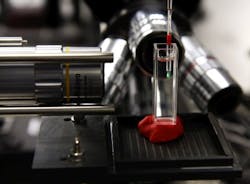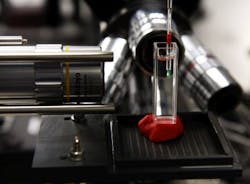Optical tomography technique enables diagnostic 3D image capture in real time
A technique developed by researchers at Charles III University of Madrid (UC3M) in Spain that uses optical projection tomography makes it possible to use optical biomarkers often used with transgenic animals, such as green fluorescent protein (GFP), to follow the development of living organisms up to 3 mm long with three-dimensional (3D) images.
Related: Biomedical diagnostics using personalized 3D imaging possible
Researcher Jorge Ripoll of the UC3M Department of Bioengineering and Aerospace Engineering, who was involved in the work, says that the advance consists of being able to follow the development of these organisms, which normally appear opaque when viewed with a conventional microscope because they diffuse a lot of light when they approach adulthood.
"It helps us visualize new stages," says Ripoll. He adds that although the method cannot be used on living humans because their tissue is very opaque, it can be used to take 3D measurements of biopsies, which is valuable to surgeons.
Ripoll explains that their system consists of a light source that stimulates the fluorescence and a camera to detect it, and requires that the sample rotates much like how x-rays are taken. Afterwards, with that information, "we must construct a three-dimensional image," he explains.
Full details of the work appear in the journal Scientific Reports; for more information, please visit http://dx.doi.org/10.1038/srep07325.
------
Follow us on Twitter, 'like' us on Facebook, connect with us on Google+, and join our group on LinkedIn
Subscribe now to BioOptics World magazine; it's free!

